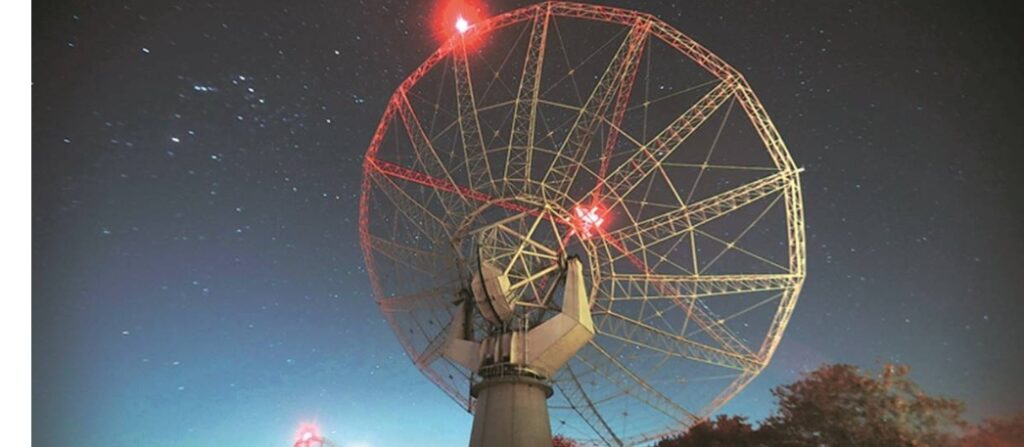Pune now home to India’s largest astronomical activities

Ruchita Naik
Pune, March 2, 2020: Pune is now home to the country’s largest astronomical data archives for celestial observation. According to the data about one petabyte (10 lakh gigabyte) celestial observations were performed using the Giant Metrewave Radio Telescope (GMRT) since it became operational in 2002.
Last week, GMRT’s 2008 data played a vital role in the discovery to confirm the explosion happen inside the Ophiuchus galaxy. It is been called the second big explosion after the Big Bang Theory, according to a team of international astronomers, stated a report filed by journalist Anjali Marar of The Indian Express.
The GMRT is located about 80 km from Pune. It is operated by the Tata Institute of Fundamental Research (TIFR)-National Centre for Radio Astrophysics (NCRA).
Yashwant Gupta, director, NCRA, “There are other observatories in the world that generate a large amount of data and archive them. For observatories within India, the largest astronomical data archives are those at NCRA.”
The team of radio astronomers at NCRA has developed data storage and data processing pipeline to keep the large seta of data safe and make the old data sets easily extractable.
“Currently, large volumes of raw data are lying unused in our archives. Every researcher does not possess the skill to process data to generate image However, using the new processing pipeline, data will be systematically processed to produce images,” Yogesh Wadadekar, senior NCRA researcher and scientist-in-charge of GMRT archive, told The Indian Express.
Wadadekar further added, “This effectively means research teams will no longer need to spend additional time in handling and processing raw data but instead can plan further course of research activities using processed images.”
An official said that a prototype of data processing pipeline is nearly completed and some tests are currently underway, observatory maintains all the observations made since its inception, about 18 years ago.
GMRT completed its first major up-gradation last year. The observatory has been operating in a wider frequency range between 120 MegaHertz (MHz) and 1,460 MHz during the past 6 months. The upgraded-GMRT (uGMRT) offers 10 times larger frequency bandwidth along with higher sensitivity for performing scientific observations.
“With uGMRT, we have at least 10 times more data and storage capacities, too, have been scaled-up taking into account the future requirements,” the NCRA director said.
The centre had about 250 terabyte data, till it was upgraded. “This is the biggest challenge. With the upgrade, we now generate as much data in one year as we did in a decade,” said Wadadekar.
Gupta said NCRA archives will also store data generated from pulsars. “Earlier, raw data would be shared directly to users, but now on, we plan to store pulsar data also. Since pulsar data emerge in large volumes, it will be compressed first before getting stored and archived. All pulsar data from uGMRT will find a place in our archives,” said Gupta, who studies pulsars.






